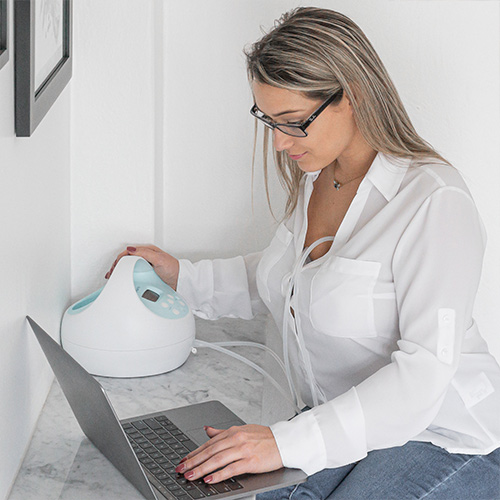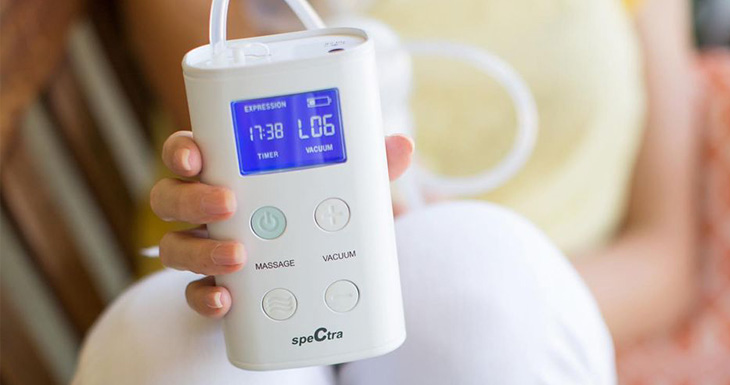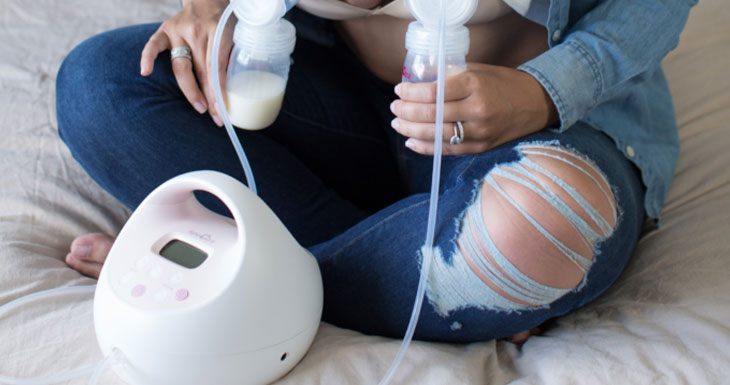Healthy Eating and Breastfeeding
Melissa Portunato MPH, IBCLC, RLC
Though it’s totally fine to indulge every once in a while, maintaining a balanced diet will give you energy, keep you satisfied longer, and can help your breast milk flow easier. Breastfeeding burns on average between 300-500 calories per day. It takes a ton of energy to produce your liquid gold; make sure you compensate with healthy milk-making foods.
Read on to learn more about the best foods to eat while breastfeeding to keep you feeling happy and healthy as a new mom.
What are the best foods to eat while breastfeeding?
The best breastfeeding foods offer a variety of macronutrients – protein, complex carbohydrates, and healthy fats. The World Health Organization recommends adding 25grams of protein for breastfeeding moms – individual needs based on your weight and other factors.
High-quality protein sources include eggs, red meat, and wild-caught salmon. These all have a long list of health benefits, but the top of the list includes improving eye health, aiding in weight loss, and preventing disease. If you’re vegan or vegetarian, legumes are loaded with iron and protein too! Especially the dark ones!
Leafy greens are nutrient-dense, low in calories and carbs, and packed with vitamins and minerals like Calcium, Vitamin K, Folic Acid, and Iron. Fresh fruit is a simple, nutritious snack! Blueberries are one of the most nutritious fruits globally, providing Vitamin C, Vitamin A, Vitamin E, and Antioxidants. Eating two servings a day of fresh fruit like berries can help amp up weight loss, decrease inflammation, and promote digestion which is beneficial to breastfeeding moms recovering from childbirth.
Are “diets” OK when breastfeeding?
Any diet that dramatically cuts calories can impact milk supply, especially within the first 6-8 weeks, as your body regulates how much milk is needed to keep your baby growing and thriving. However, low-carb diets like the Paleo diet are compatible with breastfeeding moms as long as they consume enough nutrients from a variety of lean proteins, fruits, and veggies. Research studies claim, aiming for at least 1800-2000 calories per day, breastfeeding moms can safely lose about 1 pound a week.
Are protein shakes OK?
The short answer is YES! But not all protein shakes are created equal. Here are tips when choosing a protein shake.
- Making your own protein shake is always best! Packed with protein, calcium, magnesium, and iron, raw almond butter makes for an easy base for a clean protein shake made at home.
- Consider medications and supplements you are already taking to avoid exceeding recommended daily values of vitamins and minerals, which can be dangerous for you and your baby.
- Avoid protein shakes created for athletes which can have additives not intended for nursing mothers.
- Avoid shakes with added and artificial sugar, GMO’s, caffeine, and common allergens such as dairy, wheat, soy, etc.
- Most plant-based store-bought options are considered safe for nursing moms. Though some whey proteins may be safe, many often have additives that can be harmful. Always check with your doctor first before starting a new store-bought protein shake.
Proper nutrition is required to feel well and care for your new baby! A healthy diet can also encourage plentiful milk production. Fuel your body right and be kind to yourself. Don’t forget to always check with your doctor before starting any weight loss or exercise plan. Have more questions? Please email us at ibclc@spectrababyusa.com.
Sources:
Kominiarek, M. A., & Rajan, P. (2016). Nutrition Recommendations in Pregnancy and Lactation. The Medical clinics of North America, 100(6), 1199–1215. https://doi.org/10.1016/j.mcna.2016.06.004
Dewey et al. (1994). Effects of dieting and physical activity on pregnancy and lactation. Am J Clin Nutr, 59( Suppl 2), 446s-453s.
Lauwers, J. & Swisher, A. (2015). Counseling the Nursing Mother: A Lactation Consultants Guide. Burlington, MA: Jones & Bartlett Learning.
Neville et al. (2014). The relationship between breastfeeding and postpartum weight change—a systematic review and critical evaluation. International Journal of Obesity, 38, 577-590.








